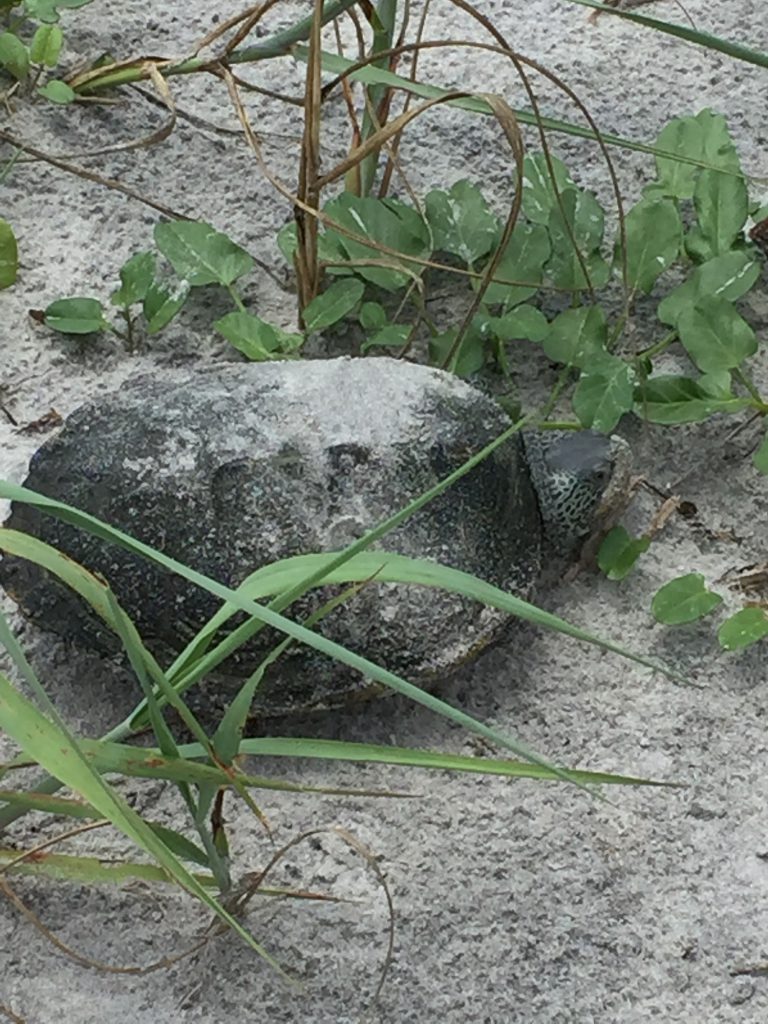The diamondback terrapin (Malaclemys terrapin) is the only turtle in the world believed to live exclusively in brackish water. It is found in tidal marshes on the Atlantic and Gulf Coasts from Massachusetts to Texas. The diamondback terrapin is a relatively small turtle, ranging from 5 to 10 inches in carapace length, with females being larger than males. Carapace coloration ranges from brown to black and each scute has diamond-shaped rings. Skin color ranges from white to almost black with small, black spots throughout.
You are most likely to spot a terrapin during their nesting season, from May through July, when females come ashore to lay their eggs. Diamondback terrapins nest on beaches, coastal dunes, islands, and other areas with sandy soils and sparse vegetation. Females will dig a triangular-shaped cavity 4 to 8 inches deep and deposit from 4 to18 eggs. Eggs are about 1.5 in. long and are pinkish-white in color with a leathery texture. The eggs will incubate for 60 to 85 days and the hatchlings emerge in August and September.

Currently, diamondback terrapin numbers are in decline, mostly due to human-related threats. Because they share a range with the blue crab, they oftentimes get caught in crab pots and drown. By-catch reduction devices attached to the crab pot opening can help reduce mortality by reducing terrapin capture while having little to no impact on crab capture. Several states, including New Jersey, Delaware, and Maryland, require use of by-catch reduction devices. However, they are not required for crab pots in Florida. Coastal development also poses a threat to diamondback terrapins. Pollution, filling, and dredging of salt marsh has caused dramatic habitat loss. Females are frequently killed by vehicles when they come ashore to look for nesting sites. Predators associated with human activity such as raccoons, foxes, and rats also pose a major threat.
How can you help?
- If you go crabbing, fit your crab pots with by-catch reduction devices. They will drastically reduce capture of terrapins while having little to no effect on crab catch.
- If you own a boat, navigate carefully through the marsh. This is especially important during the spring, when terrapins will gather to mate.
- If you find a terrapin, do not take it back with you as a pet.
- If you spot a terrapin on the road, carefully pick it up and move it across in the direction it was going. Do not take it to another location.
- Support salt marsh conservation and restoration activities

 0
0
